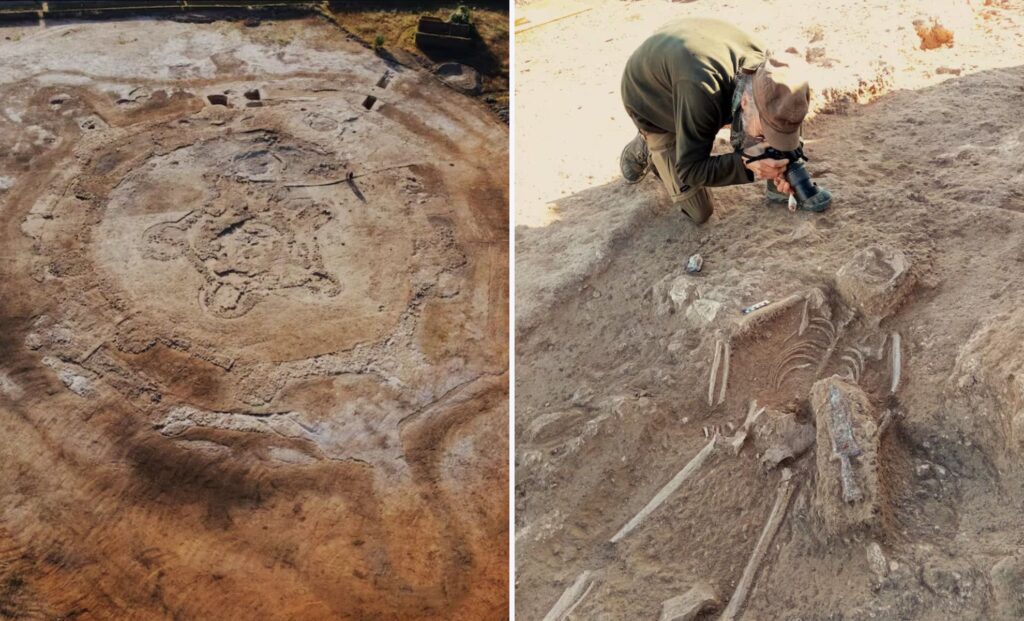The construction of a solar power plant in Almendralejo, Spain, has led to significant archaeological discoveries at the site of Cortijo Lobato, a 140,000-square-foot copper base once fortified by three concentric walls, 25 defensive towers, and deep trenches. Excavations reveal that the settlement faced a catastrophic and deliberate attack around 2450 BC, challenging previous assumptions about peaceful prehistoric communities in Iberia. Led by TerraSL archaeologist Cèser M. Perez and supervised by the Spanish Ministry of Culture, the study indicates a conflict-driven society marked by militarized structures and defenses, suggesting advanced social organization at that time.
Evidence of violent destruction rather than gradual abandonment was uncovered, with patterns of fire indicative of an intentional military assault. Although the identity of the attackers remains unknown, findings point to the Calcolithic Age being more warlike than previously thought.
In addition to the fortress, archaeologists have identified 11 archaeological sites in the region, revealing a long history of human occupation, including Bronze Age artifacts and a Roman burial linked to possible military punishment. Artifacts found at the site offer insights into daily life, including weapons, textiles, and food preparation tools, emphasizing the settlement’s defensive architecture.
Overall, the discovery of Cortijo Lobato supports the notion that prehistoric Europe was a complex landscape of conflict and alliances, with significant evidence of organized warfare and societal structure present even in ancient times.
Source link


